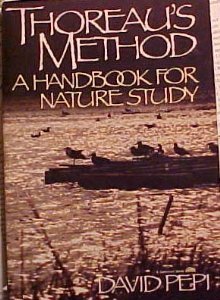
I suggest pages to read in the Handbook of Nature Study and then some simple suggestions for you to complete in a few minutes outdoors with your children. Tick Nature Study (set of 2 pages): If you want to study a common insect during your winter insect nature study time, use the 2 notebook pages in this set to record your facts and sketches. Mayfly Nature Study (set of 2 pages): Another interesting insect to study is the mayfly. Use these pages to add the information to your nature journal.
Nature study has always been a very important part of our home education. It has enabled my children to fill their days with wonder and I have observed its power to draw them closer to their Creator. All those (sometimes inconvenient) hours spent outdoors with a purpose have done magic. Now I see my older children taking long walks alone among the fields and trees and filling journal pages with observations and poetry, prayers and drawings from nature. Our primary resource is by Anna Botsford Comstock.
It has become a very popular choice among homeschoolers. However, this 800 page paperback, at first glance can seem overwhelming. Where does one begin? I will begin by telling you what NOT to do. Don't make the mistake of trying to plow through the entire book with your children from start to finish. This is a handbook, not a curriculum.
Instead of trying to fit your nature studies into the book, make the book fit your family's uniqueness. Keep in mind your location, the time of year, previous knowledge, interests and ages. After taking some time to become acquainted with this invaluable guide, I came up with a simple plan that has made our nature lessons easy and enjoyable. Before I share that plan I encourage every one who has this book to read the introductory section called 'The Teaching of Nature Study.'
This section will inspire you and provide many excellent ideas to help get you started. Focus First of all, I went to the table of contents and recorded the main areas of nature that we would study in large colorful print onto a piece of paper and posted it on our school room wall: Birds Trees Fish Amphibians Reptiles Mammals Flowers Crops Flowerless Plants Non-vertebrates Rocks and Minerals The Heavens This provides a particular area of focus every six weeks or so and it reminds us which areas still need to be studied. We don't follow a special order, but we check them off as we go. Every few years we revisit a subject but learn something new about it. I used to be very haphazard about our nature walks, but whenever I chose to 'unschool' in an area, the children became bored and real learning fell by the wayside.
In providing a particular area of study on a regular basis, I've learned that we are sure to expose ourselves to a variety of plants and animals. We can also allow for interruptions and changes in the schedule if we discover an unexpected creature or have an opportunity to visit an area where the flora and fauna were not in our plan. Prepare I quickly realized that this book wasn't designed for children to use. Instead, it is a teacher's guide to the natural world, a 'living book' for adults, if you will.
Torrent Din Standards For Flanges. We are to personally glean from it and pass our knowledge on to the children while they are observing nature firsthand. So, after choosing an area, I familiarize myself with the general information. For example, let's say we are going to study insects; before I meet with the children, I look over the first few introductory pages about insects and jot down interesting notes that I will want to share with the children. When we gather together to go outside on a nature walk, I condense and paraphrase this information for them so that they will know what to look for. This takes just a few minutes.